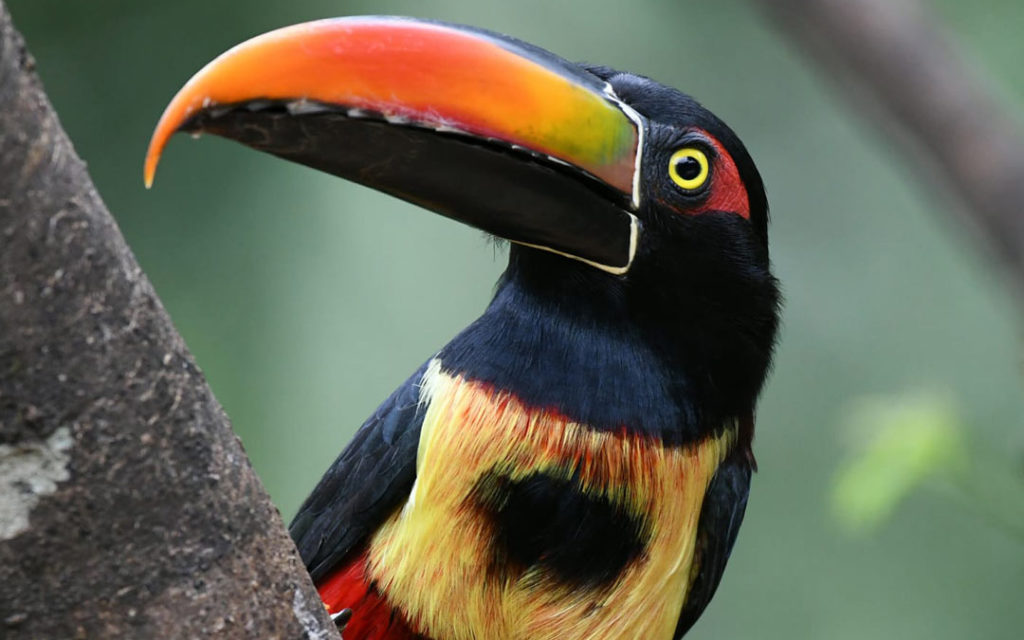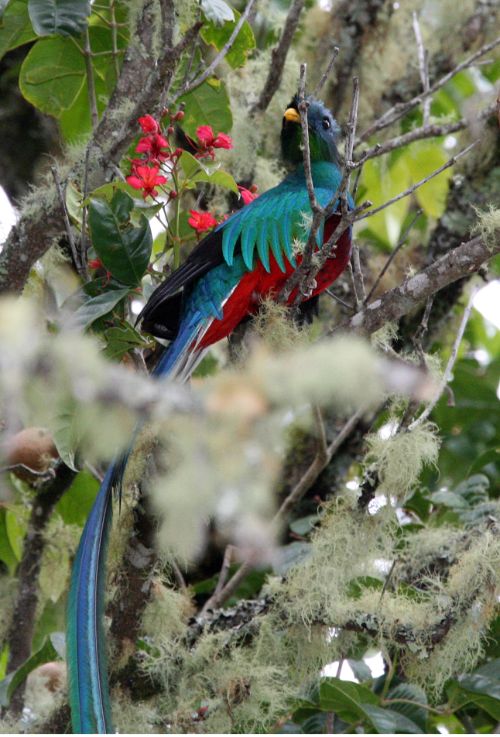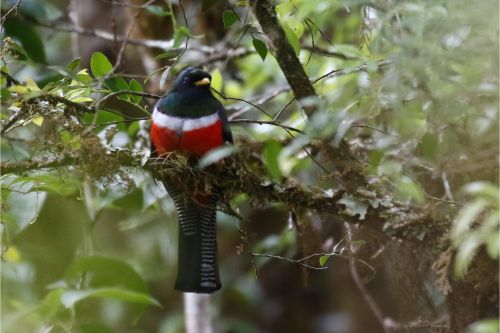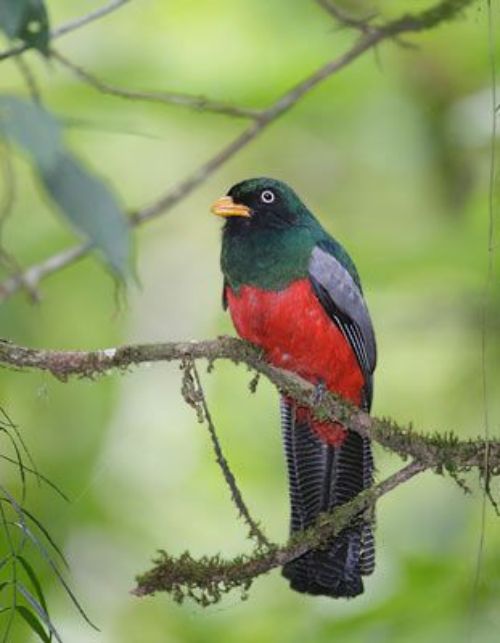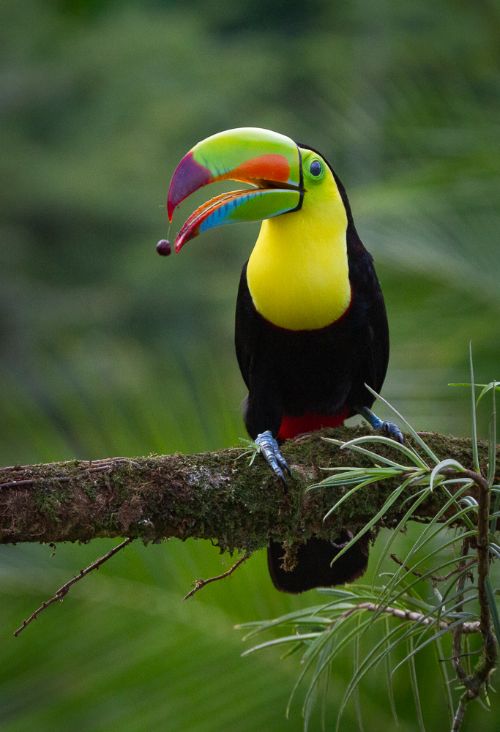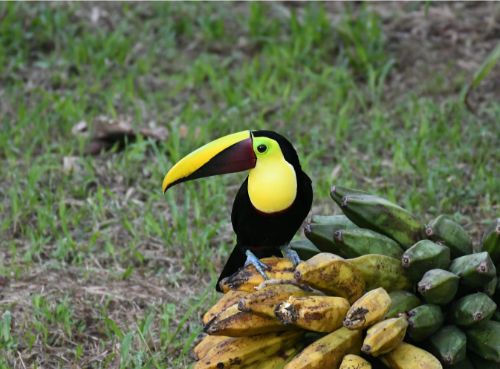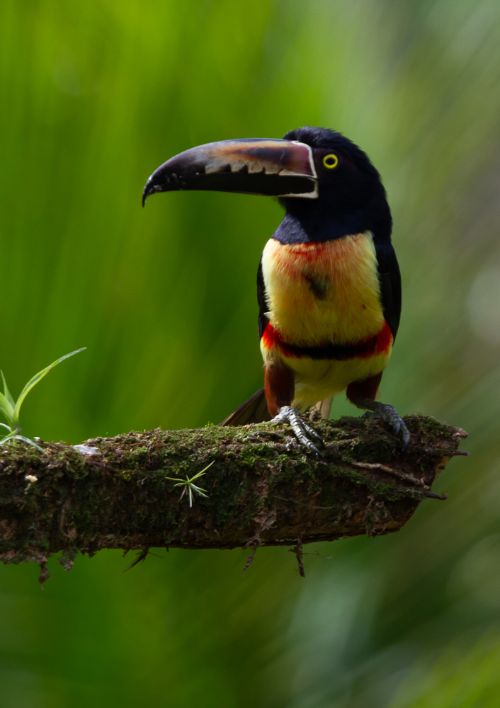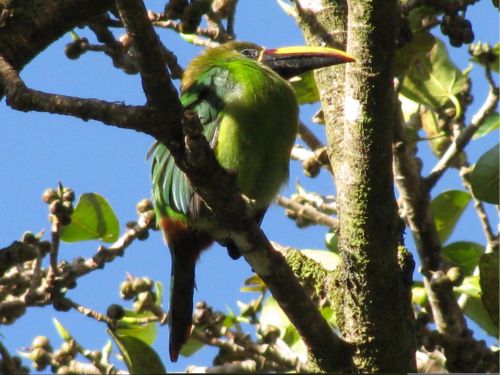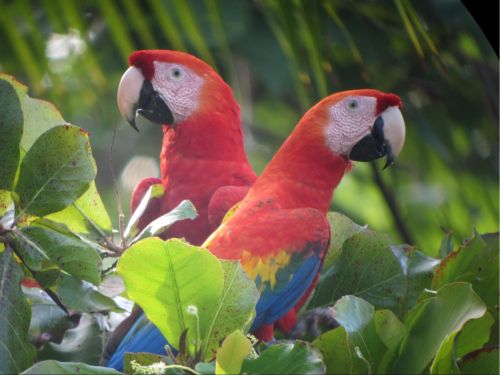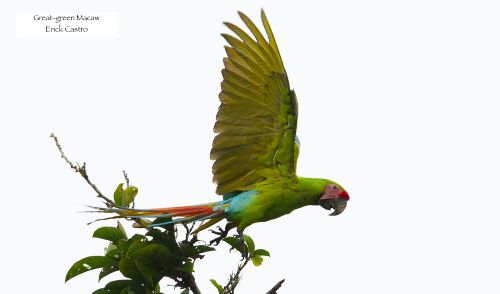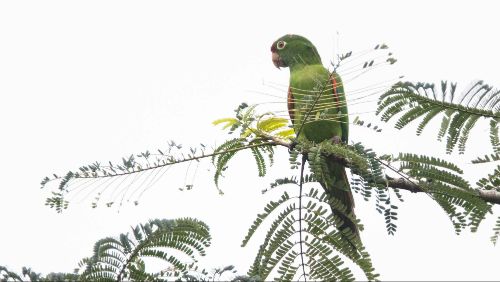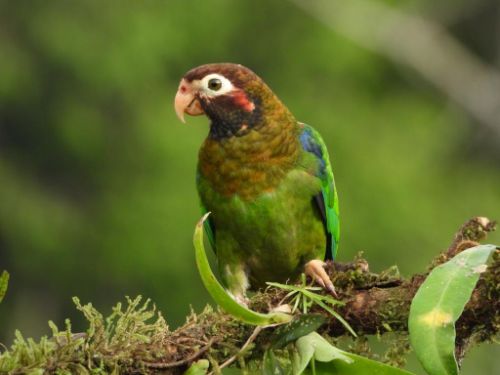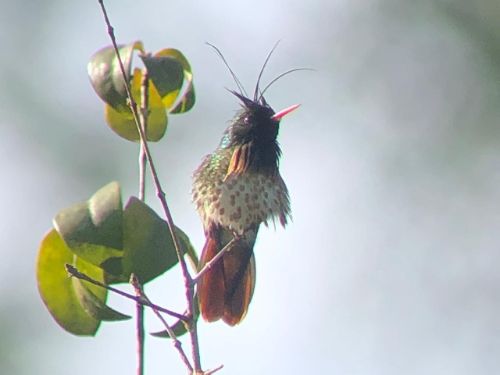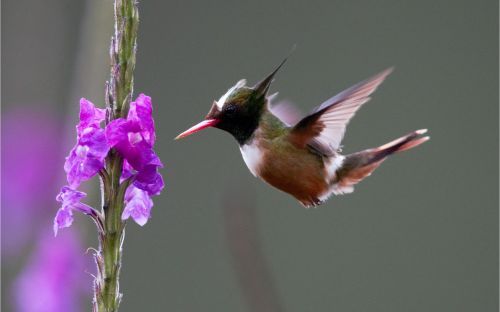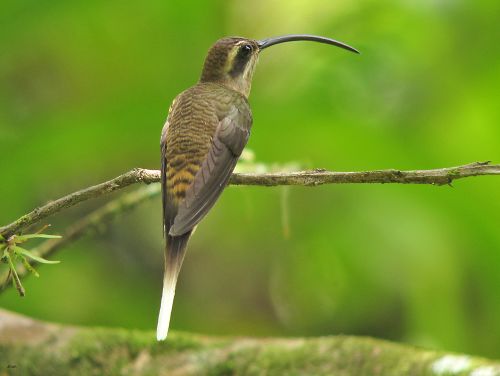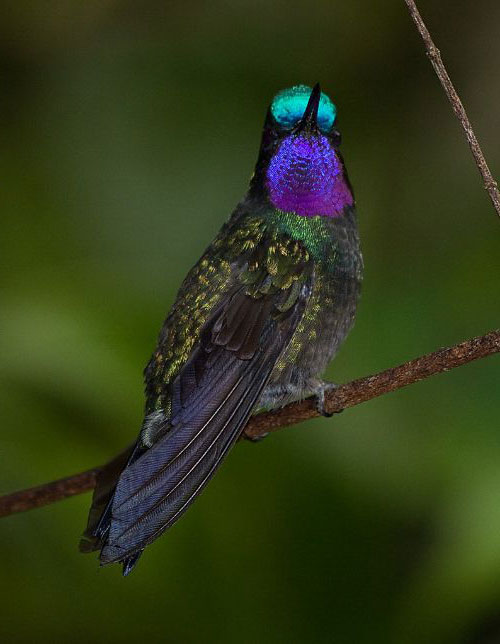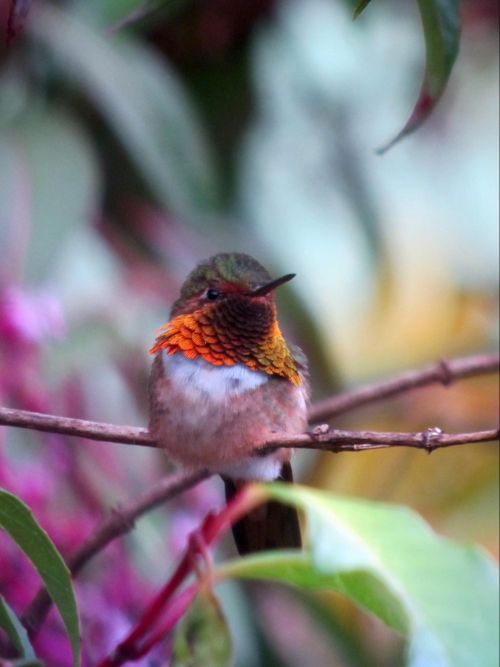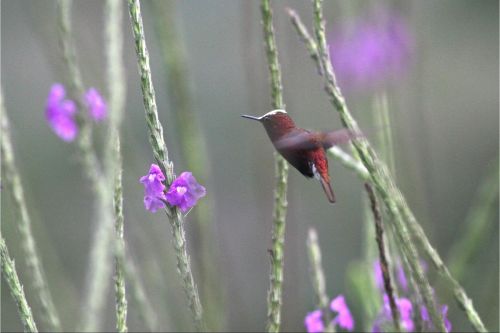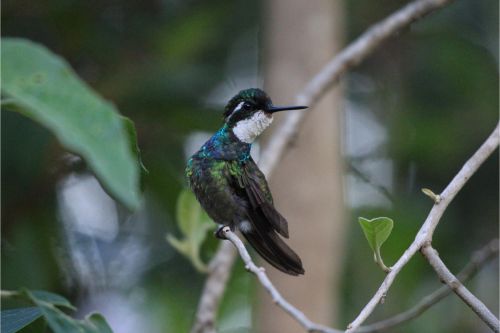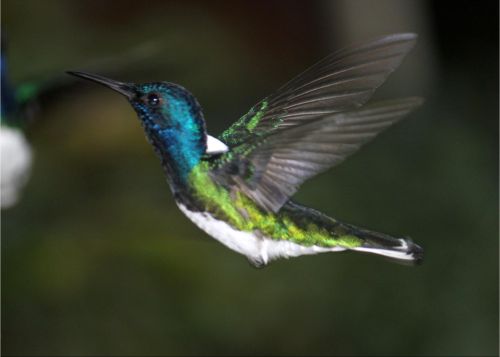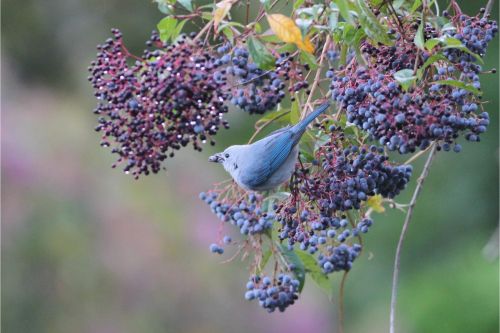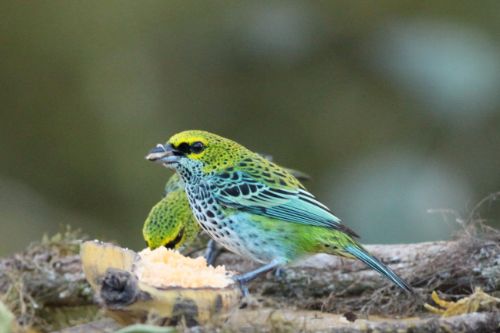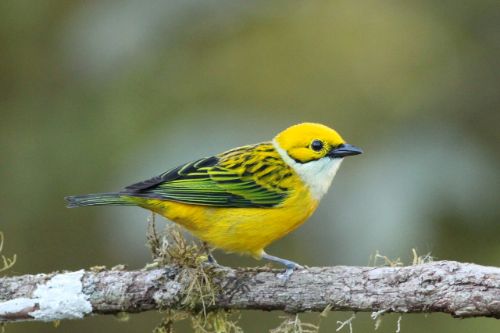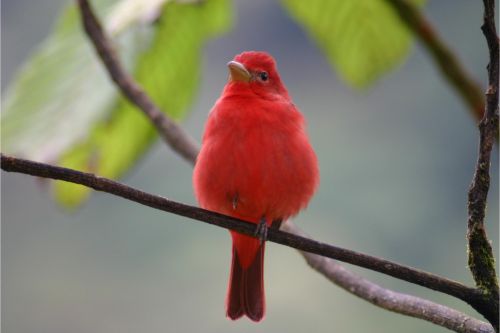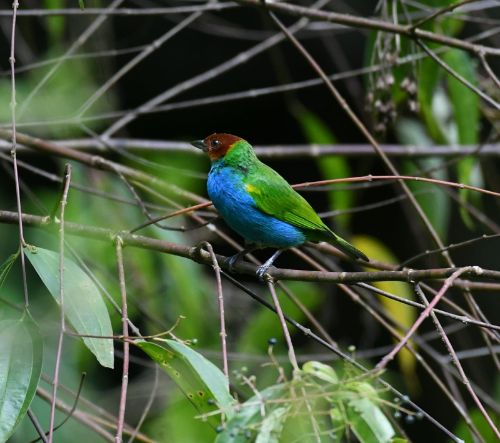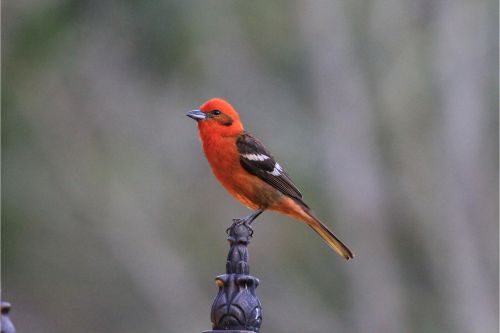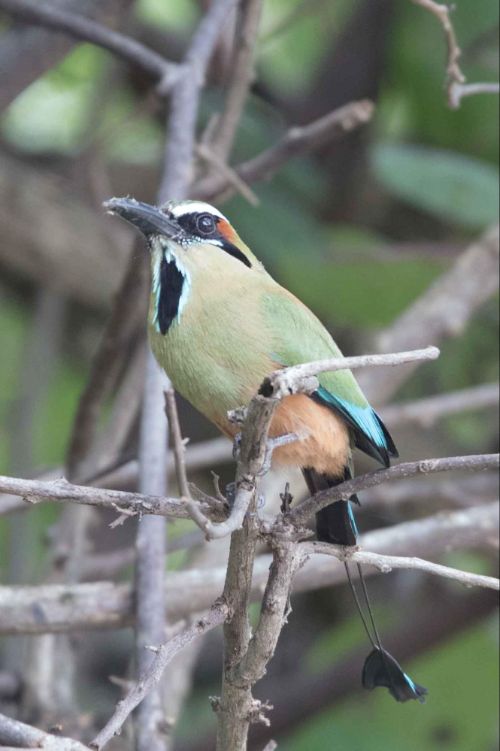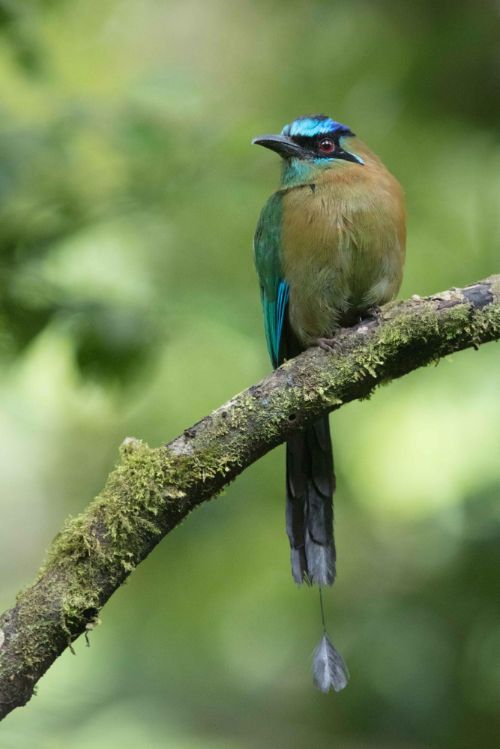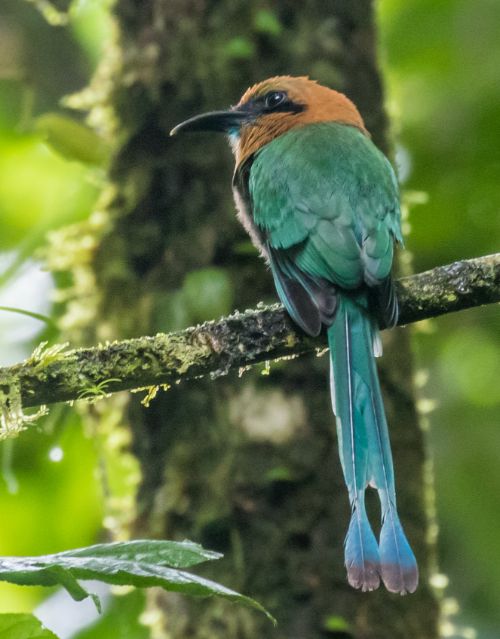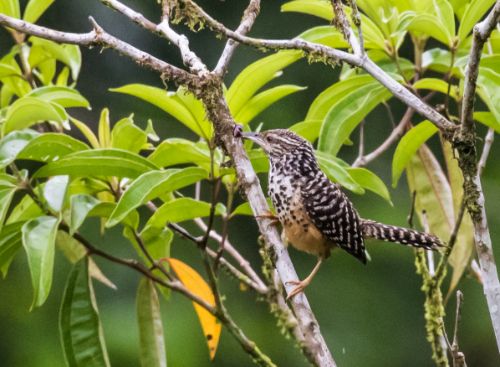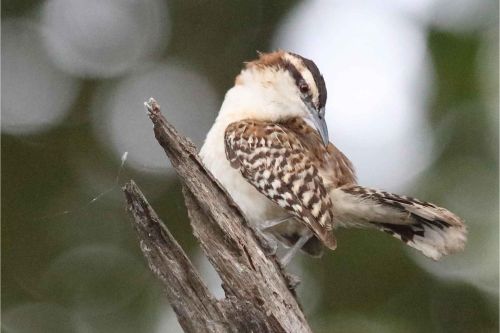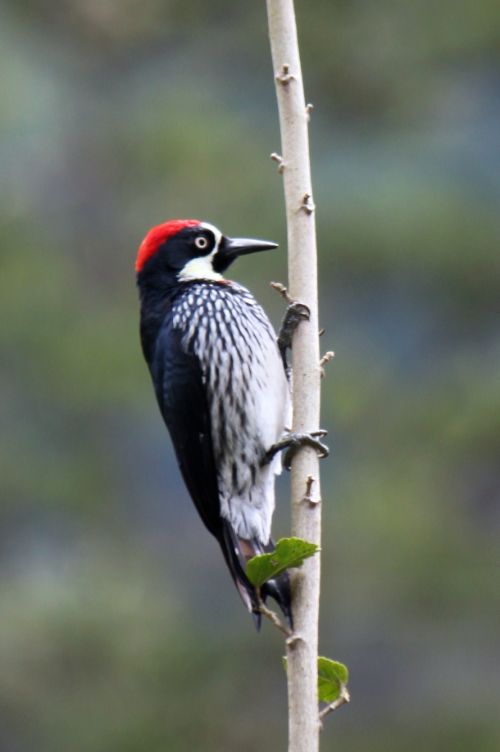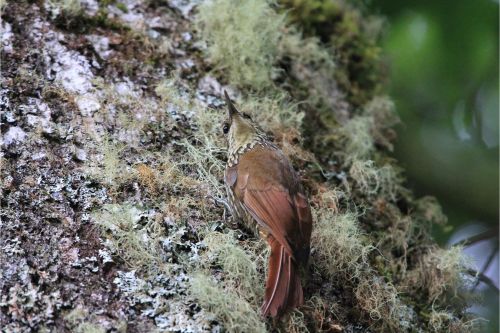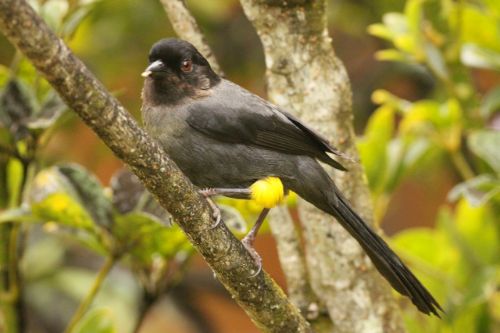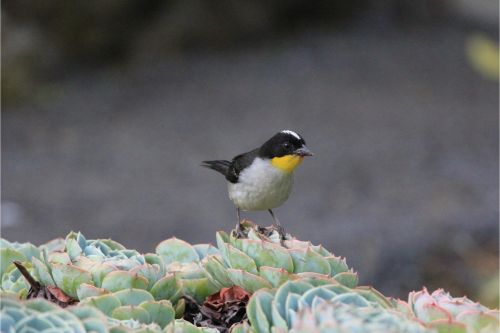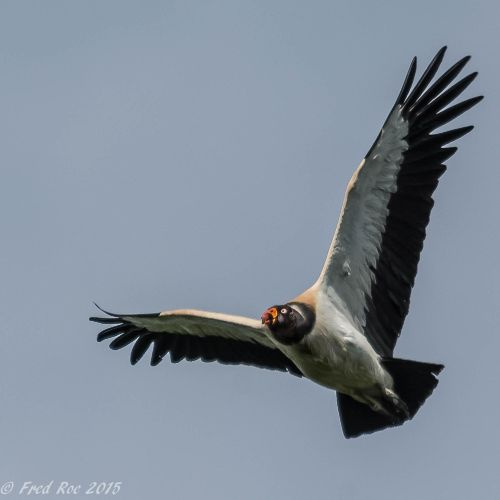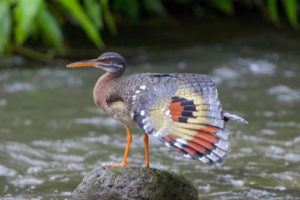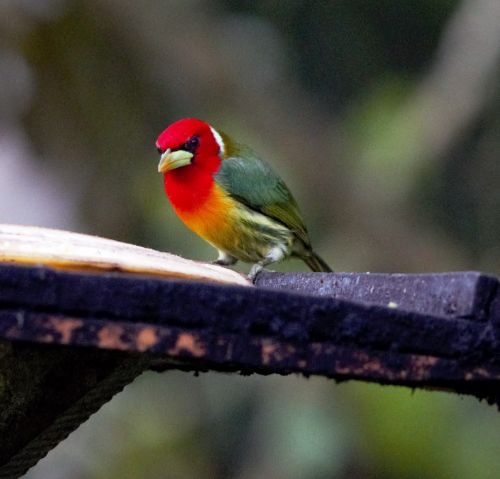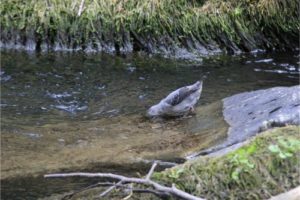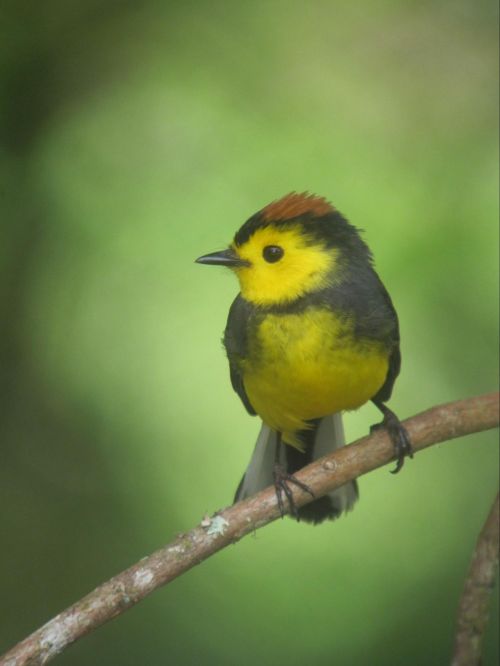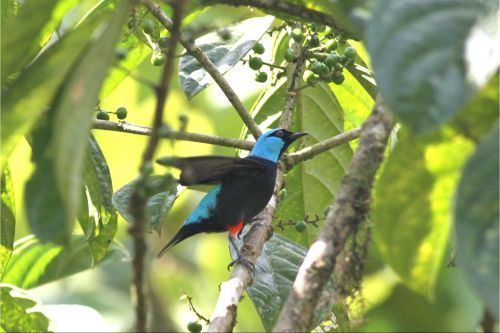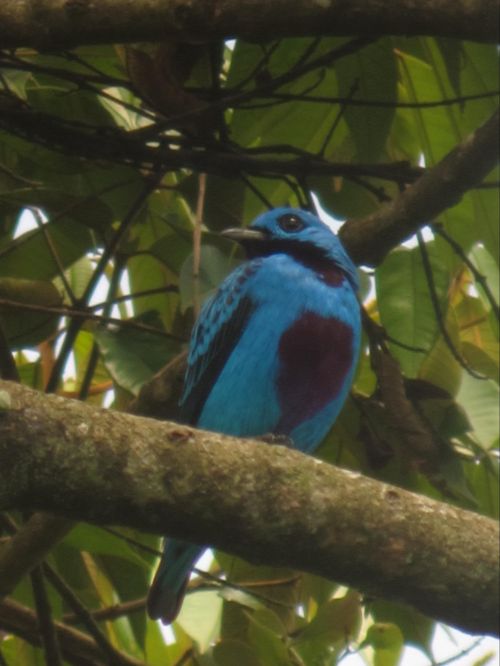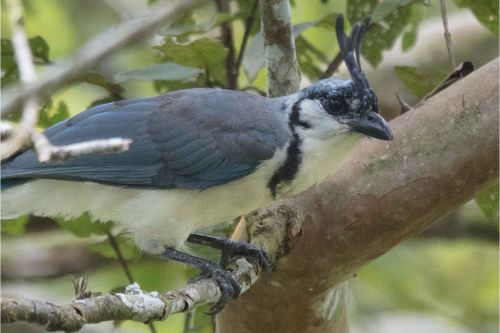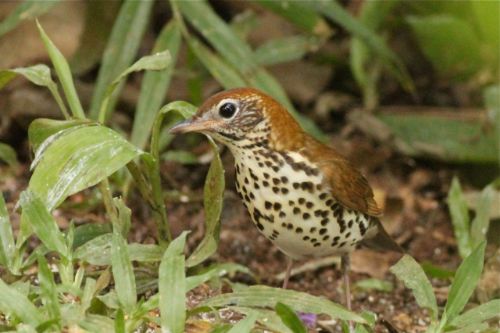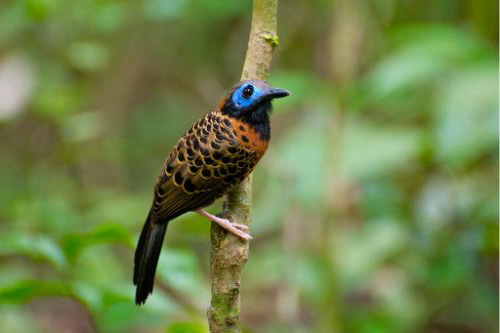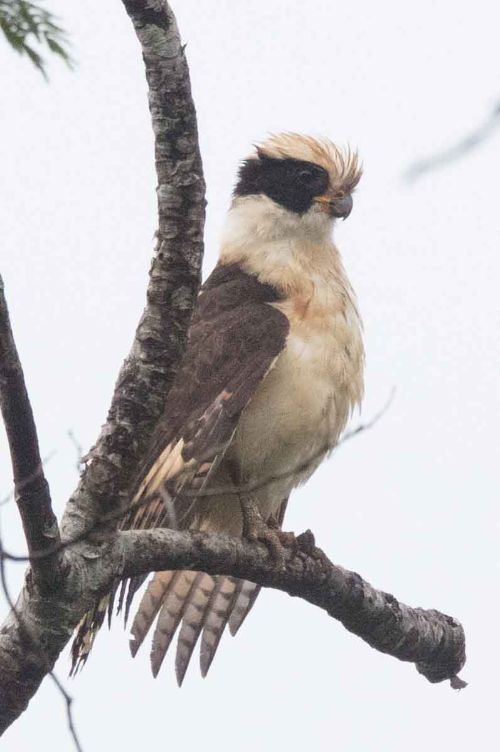A Guide to 50+ of Costa Rica’s Most Beautiful and Interesting Birds
It is amazing that over 900 species of birds can live in such a small country. Costa Rica is just the size of the state of West Virginia or the country of Denmark. Costa Rica is just 464 kms (288 miles) in length and 274 kms (170 miles) in width, yet per square mile or kilometer has the most abundant and diverse bird life. The key to the success of such a variety of species is the topography of the country. The Central Mountains and Volcanoes have created a diversity in moisture and temperature between the highlands and the lowlands, and the Caribbean and the Pacific. The result is six major live zones, each zone able to support and provide habitats for many different birds. Here is a list of some of the favorites of our staff and guides.
Trogons
Trogons are colorful birds, with a unique shape that makes them very identifiable in the rainforest. Costa Rica has ten species of Trogons. The Resplendent Quetzal is the easiest of the Trogons to identify. The other species can most easily be distinguished by the color of the eye ring, chest, and pattern of the tail feathers. The male and females of the species differ in color, have your field guide handy.
1- Resplendent Quetzal
The Quetzal is not just the most beautiful Trogon, it’s one of the most beautiful birds in the world. With its stunning emerald colored feathers, ruby red chest and belly, and four long tail coverts that stream down up to 30 inches beyond the tip of the tail, the Quetzal is truly a must see for all bird watchers. Quetzals can be found in the cloud forests of Costa Rica, predominantly in San Gerardo de Dota and Monteverde.
2- Collared Trogon
The beautiful male Collared Trogon features a bright green head, and red belly, as well as a black mask and bright yellow bill. The female presents the same, except she has a brown head and back, replacing the green of the male. The Collared Trogon prefers the foothills of both the Caribbean and the Pacific of Costa Rica.
3- Lattice Tailed Trogon
The Lattice Tailed Trogon is the only Trogon with a pale iris. The underside of the tail displays an intricate barring of grey, black, and white. The Lattice Tailed Trogon is endemic to Costa Rica and Western Panama. The best place to see this lovely Trogon is in the Caribbean Foothills, but you’ll need to search, it’s not an easy bird to find.
Toucans
No bird says the tropics like the Toucan. Their colorful long bills, and beautiful bright patterns of feathers make them a favorite for bird watchers, bird photographers and naturalists. Costa Rica has six species of Toucans and luckily by visiting the right habitats, all six are fairly easy to see.
1- Keel Billed Toucan
The most iconic of all the Toucans, The Keel Billed Toucan is often called the Fruit loops Bird. The call of the Keel Bill makes it easy to identify, just listen for a frog like croak coming from the trees above. The Keel Bill has wide distribution from the Caribbean Slope, Lowlands, Mid-Elevation, in both forested and inhabited areas.
2- Yellow Throated Toucan
Formerly known as the Chestnut Mandibled Toucan, the Yellow Throated Toucan is the largest Toucan in Costa Rica, standing at about 22 inches tall. This beautiful bird can be seen on the Caribbean or Pacific slopes, and lowlands.
3- Fiery Billed Aracari
This small very social Toucan can be found traveling in small groups through the Central and Pacific slope. The brightly colored red-orange upper mandible makes this handsome little bird hard to mistake.
4- Emerald Toucanet
The Emerald Toucanet gets its name from its lush deep green breast and belly. The rich blue around the bill gives the striking little Toucan a regal look. The Emerald Toucanet favors mid-level montane wet forests. It is a common visitor to feeders set in the right habitat, making it a favorite for birders and bird photographers.
Parrots, Parakeets, & Macaws
Costa Rica is fortunate to have 15 species of Parrots and Parakeets and 2 species of Macaws. With bright colorful plumage and raucous vocalizations, Parrots are favorites of not just bird watchers and bird photographers, but also nature lovers in general. Listen and look up to see some of your favorite Parrots while visiting Costa Rica.
1- Scarlet Macaw
This splendid bird can not be mistaken for any other. The colors are simply magnificent with a scarlet red head and back, sapphire blue wings, green and yellow stripes and a striking white mask, the Scarlet Macaw is certainly one of nature’s most wonderful gifts. The Scarlet Macaw has good distribution from the Central Pacific south to the Osa Peninsula. Recent rehabilitation programs are allowing for the the Scarlet Macaw to reach into the northern province of Guanacaste and east into the Caribbean as well.
2- Great Green Macaw
The Great Green Macaw is the largest of all the Parrots in Costa Rica. Like its cousin, the Scarlet Macaw, it is unmistakable, with its incredible combination of brilliant green head and back, and rich blue fringed wings. The Great Green Macaw also has the tell-tale SQUAWK that can be heard long before you see this fantastic bird flying overhead. The Great Green Macaw is easiest to see in the northern Caribbean lowlands, though rehabilitation programs are extending its range.
3- Crimson Fronted Parakeet
The Crimson Fronted Parakeet is the most common Parakeet in the Central Valley. It’s easiest to identify by its long pointed tail, red on the leading portions of the wings, and a red forehead (easiest to see when it’s perched). This very pretty little Parakeet is usually found in large flocks and has a wide distribution throughout the country.
4- Brown Hooded Parrots
The cute little Brown Hooded Parrot is identified by its chocolate brown hood, white orbital ring and red ear patch. Like most of their cousins, they are a loud bunch, traveling in flocks in wet lowlands and middle elevations on both the Caribbean and Pacific sides of the country.
Hummingbirds
Hummingbirds are a huge draw for bird watchers and bird photographers. Costa Rica is blessed with more than 50 different recorded species in the country. There are two species totally endemic to Costa Rica, the Mangrove Hummingbird, and the Coppery-Headed Emerald Hummingbird. Hummingbirds have excellent distribution throughout the country and can be found at most elevations and on both the Caribbean and Pacific sides of the country. The largest diversity of species occurs at middle elevations. Here are some of our favorites:
1- Black Crested Coquette
This tiny beautiful little hummingbird measures at about 3 inches. The male sports long wiry crest feathers and a prominent spotted or speckled chest. This Coquette has a small distribution, favoring the Northern Caribbean foothills and adjacent lowlands. The gardens of the Arenal Observatory Lodge, in the verbenas, is a good place to see this impressive hummingbird.
2- White Crested Coquette
Like its cousin, the Black Crested Coquette, The White Crested Coquette male is identified by its long white tufts, forming a crest on its tiny green head. The White Crested Coquette favors the Southern Pacific of Costa Rica.
3- Long Billed Hermit
This very handsome hummingbird in the Hermit family is unmistakable with its long curved bill and equally long thin tail. This bird is fairly common in the lowlands of both the Caribbean and the Pacific sides of Costa Rica.
4- Purple Throated Mountain Gem
One of the prettiest of all the hummingbirds, the Purple Throated Mountain Gem is unique with its brilliant purple throat, and delicate turquoise cap. This little beauty favors mid elevations from Guanacaste to the Talamancas. It’s endemic to Nicaragua, Costa Rica and Panama.
5- Scintillant Hummingbird
This exquisite hummingbird is the smallest hummingbird in Costa Rica. At barely 3 inches, it’s easy to mistake it for a moth. It prefers the middle elevations of the Central and Talamanca Mountains. The male sports a gorgeous bright orange throat.
6- Snowcap Hummingbird
The Snowcap is one of the most wanted hummingbirds for photographers and bird watchers visiting Costa Rica. With its unique bright white forehead and small pointed bill, identifying the Snowcap is easy. The verbena gardens at Rancho Naturalista is a great place to spot the Snowcap.
7- White Throated Mountain Gem
The sublime little hummingbird prefers the highlands of the Talamanca Mountains. It’s endemic to Costa Rica and Panama. A visit to Hotel Savegre will ensure a chance to see this pretty little bird.
8- White Necked Jacobin
This splendid species features a bright Royal Blue head, and a pure white underbelly creating an almost hand painted look. At about 5 inches, it’s a rather large hummingbird. The Jacobin favors wet lowlands and foothills on both the Caribbean and Pacific sides of Costa Rica.
Tanagers
Tanagers are a favorite of bird watchers and photographers. Not just for their often brilliant and dazzling plumage, but because many species favor feeders, making them easy to see and photograph.
1- Blue-Gray Tanager
One of the most common Tanagers found throughout Costa Rica, but also one of the prettiest. Depending on the light, this lovely bird can look brilliant blue to soft grey.
2- Speckled Tanagers
The Speckled Tanager favors mixed flocks in wet foothills and middle elevations. With its mix of turquoise, bright green and yellow and the unmistakable black speckles, it’s one of the countries most delightful Tanagers.
3- Silver-Throated Tanager
The Silver Throated Tanager is a predictable visitor to fruit feeders. It’s common in wet foothills and middle elevations. It’s a very handsome bird with a wonderful bright yellow head and silver throat, plus the distinctive black line around the cheek makes it easy to identify.
4- Summer Tanager
The Summer Tanager is a common migrant from April to September. The male is differentiated from the Hepatic Tanager by its light pale bill. The Summer Tanager can be seen throughout the entire country during its migratory visits.
5- Bay Headed Tanager
The Bay Headed Tanager is one of the most alluring birds in Costa Rica. It’s fairly common on the southern Pacific Slope, and middle elevations of the Caribbean foothills. With its rusty red head, green wings, blue underbelly, and distinct yellow collar, it’s a must see and must photograph for birders and photographers.
6- Flame-Colored Tanager
This brilliant Tanager prefers the middle elevations of the Central and Talamanca Mountains. It’s a large Tanager, standing at 7 inches. The male and female have similar markings, but the male is bright red orange and the female a duller yellow.
Motmots
Motmots are truly some of the most delightful birds of the Costa Rican Rainforest. With six distinct species in Costa Rica, lovers of these handsome birds will enjoy adding them to their life lists and getting top photographs too. Motmots prefer the interior forest or forest edge and typically perch quietly watching for insects, small reptiles and amphibians, hoping for a nice meal.
1- Lesson’s Motmot
The Lesson’s Motmot was formerly known as the Blue-Crowned Motmot. With its long blue racket tail, and the intense blue ring around the black crown, it is one of the prettiest birds in Costa Rica. Listen for its telltale call of hoop-hoop-hoop to help you spot this beauty.
2- Turquoise Browed Motmot
The Turquoise Browed Motmot is the most common Motmot found in Guanacaste, the north Pacific province of Costa Rica. This Motmot prefers the dry forests of the Northern Pacific lowlands and foothills. This beautiful bird is the national bird of El Salvador and Nicaragua.
3- Broad Billed Motmot
This striking Motmot prefers the Caribbean lowlands and foothills. The Broad Billed features the long racket tail, and rusty head and chest. All but one species of Motmots also feature the distinctive black spot on the center of their chests.
Wrens
Walking through the rainforest, hearing a beautiful melodic call, most likely it’s one of Costa Rica’s 22 species of Wrens. If you’re lucky enough to get a good look, you’ll appreciate the intricate, gorgeous, feathers and patterns of most Wrens. You need to be quick though, as most species flit and fly through the understory, stopping just long enough to tease bird watchers, before they hide again.
1- Band Backed Wren
This is a large Wren, at 7 inches and is simply stunning. With black and white stripes on the back, a spotted chest, and rusty belly, the Banded Back is truly a thing of beauty. The Band Backed Wren is easiest to see on the Caribbean slope.
2- Rufous Naped Wren
This is a bold Wren. They often make their homes in the gardens of people, seemingly willing to share their habitats with homeowners in the Pacific region of Costa Rica. These Wrens are very social and are often found singing merrily in the early mornings throughout gardens and forests.
Woodpeckers and Woodcreepers
Costa Rica has 16 species of Woodpeckers, from the tiny Olivaceous Piculet to the huge Lineated and Pale Billed species. Woodpeckers are widespread throughout Costa Rica and can often be heard tap-tap-tapping throughout the rainforest. There are also 16 species of Woodcreepers in the rainforests of Costa Rica. (This is not including Ovenbirds, Xenops). Woodcreepers also have a very wide distribution throughout the country. Here are two of our favorites:
1- Acorn Woodpecker
This lovely little Woodpecker prefers the highlands. The striking facial patterns make him a favorite for birdwatchers and bird photographers.
2- Spot-Crowned Woodcreeper
This very handsome Woodcreeper has a slender, decurved, pale bill, and a very noticeable spotted crown. This bird favors the Talamanca Mountains and older Oak forests.
Finches
The distinguishing characteristic of a finch is its strong conical bill. Costa Rica has six species of Finches and Brush Finches. Though often thought of as plain colored or dull compared to other vibrant rainforest species, several species of Finches and Brush Finches have really caught our eye.
1- Yellow Thighed Finch
Traveling through the highlands, birdwatchers and bird photographers should get a chance to see this unusual and beautiful Finch. Look closely to see it appears to be wearing a pair of bright yellow pants. This lovely bird is endemic to Costa Rica and Western Panama.
2- White Naped Brush Finch
Stunning markings make it easy to identify this very handsome Brush Finch. Look for the white crown stripe and bright yellow throat. This Brush Finch likes to forage through secondary growth and weedy areas through the Central and Talamanca Mountains.
New World Vultures
Costa Rica has four species of vultures, the Turkey, Black, Lesser-Yellow Head, and the King Vulture. Bird watchers and Bird photographers can see them soaring through the skies, in search of their favorite meal, carrion.
1- King Vulture
While it can be hard to distinguish the Turkey and Black Vultures, when they are soaring up high, the King Vulture has some strong identifying characteristics that make it unmistakable. The black and white plumage pattern tells you immediately, you’ve got a King Vulture in your binoculars or camera.
Some of Our Other Favorite Birds
With so many beautiful birds to choose from, it’s hard to pick a favorite bird or best bird, but here are a few more of our top choices. These birds were chosen for their stunning beauty or unusual behavior.
1- Sunbittern
Sunbitterns are found near forested streams in the foothills and lowlands of Costa Rica. While quite lovely when spotted perched along the river, it’s when they spread their wings that the real show begins.
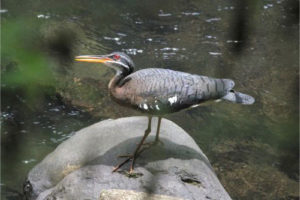
2- Red Headed Barbet
The Red-Headed Barbet favors wet montane forests at middle elevations. The Barbet is a predictable visitor to fruit feeders making him a good subject for photographers and bird watchers. The striking deep red head, yellow belly, and green back make him one of the most handsome birds of the forest.
3- American Dipper
This small grey bird, just 7 inches, can be found along mountain rivers foraging for food. The interesting thing is that he not only forages along the river, but also IN the river. The Dipper will jump into rushing rivers, disappear underwater, and return to the safety of the rocks, hopefully with a hearty meal.
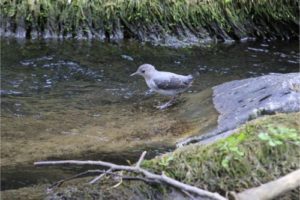
4- Collared Redstart
This very sweet little bird is endemic to Costa Rica and Western Panama. It can be found foraging in middle and lower levels of mature forest often in mixed flocks.
5- Scarlet Thighed Dacnis
A spectacular bird. Electric blue head and back, jet-black underparts, and tiny scarlet thighs are the trademarks of the Scarlet Thighed Dacnis. This wondrous bird is fairly common on the Caribbean slope.
6- Turquoise Cotinga
This shy elegant bird is one of the most wanted species in Costa Rica. With a neon blue back and head and bold magenta throat and belly, it’s easy to understand why birders want to have it on their life lists and bird photographers want to capture its image. Visitors must travel to the Southern Pacific to see this beauty.
7- White Throated Magpie Jay
If you are looking for a social, fearless, funny bird, that is also quite impressive looking, you need to see the White-Throated Magpie Jay. This large Jay is common throughout Guanacaste, often visiting hotels and resorts, hoping to steal a french fry, or cookie from the plates of unsuspecting visitors. With its lovely blue and white markings, and dapper black crest feathers, the Magpie Jay is a must for all bird watchers.
8- Wood Thrush
The Wood Thrush sports a rusty crown and spotted belly making it one of the cutest little birds in the forest. It’s a fairly common migrant between October and April, and can be found along the ground in wet mature forests.
9- Ocellated Antbird
For most bird watchers, finding a swarm of army ants and having the chance to see a variety of Antbirds is a dream come true. Being lucky enough to see the Ocellated Antbird is a special treat in the rainforests of Costa Rica. The Ocellated Antbird has a large blue extended orbital area and a very scalloped pattern of feathers on its back. This bird favors the Caribbean lowlands and foothills in dense wet forest.
10- Laughing Falcon
This dapper falcon can be identified by its broad black mask and loud call that mimics a loud Guffaw. Usually these falcons begin to call at dusk, from a high perch. They are fairly common in the Pacific lowlands.
